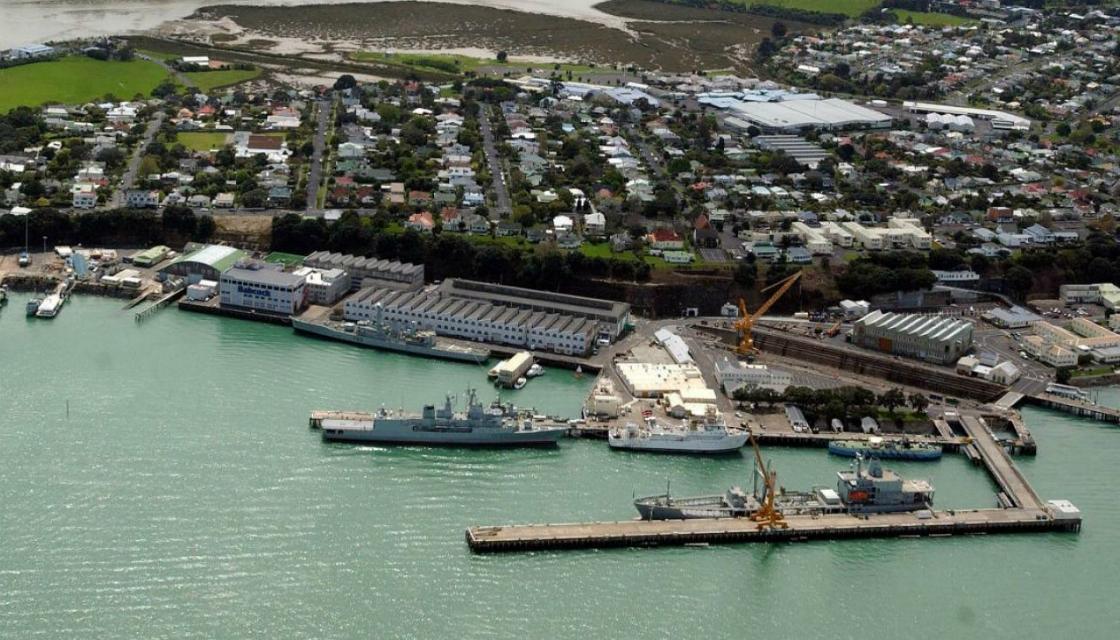
Devonport tops a list of the most polluted Defence Force bases in the country.
Trentham in Upper Hutt, which like Devonport has a lot of housing nearby, ranks among the top five most expensive bases to decontaminate, even partially.
Ohakea, Whenuapai, Waiouru and Burnham round out the dirtiest defence sites, among the 21 ranked in a 2019 report newly released under the Official Information Act (OIA).
Done to revalue the Defence Force's huge landholdings, the report makes a rough guess at a clean-up bill of at least $28m.
That does not cover groundwater.
It also leaves out 19 other defence sites, dumps and firefighting training areas, and is focused on soil.
"Remediating groundwater is often more complex," the report said.
Defence's $2 billion plans to modernise its rundown infrastructure do not include cleaning up the land.
Contaminants include petrochemicals, heavy metals, pesticides and "forever" chemicals in firefighting foam.
A third of the nine types of contaminant are highly susceptible to leaching or migrating to neighbouring areas, the report said.
The consultants, WSP, told Defence it should figure out who might be in the path of any toxins. RNZ has asked if it has done that in the intervening two years.
The Defence Force has special exemptions from many of the country's hazardous substance control laws. It is meant to regularly audit how its own rules align with the laws, but has not done an audit since 2016.
'They're responsible'
Devonport, on Auckland's North Shore, scores 398 on the report's contamination ranking, far ahead of Ohakea (311) and almost double that of third-placed Whenuapai (205). Some sites scored zero.
The naval base in the upmarket suburb has almost twice as many areas that have been assessed as likely to have contaminated land - 61 - as any other base.
The basic naval base clean-up bill is put at $8.3m - though the consultants warned these were very rough estimates.
Devonport and Takapuna local board member Toni van Tonder said no one wanted such contamination on their land or near the ocean.
"That's quite concerning for not just the people who operate down at the naval base, but also the wider community," she said.
"The base is so attached to our environment.
"I would hope that we very quickly get some further information as to what has led to this outcome, as well as what will be done to prevent it in the future, as well as cleaning up what's there at the moment."
Environmentalist Lance Cablk questioned how far the contamination might have spread.
"I'm wondering what the effect on seafood is, people fishing off the wharves, people jumping into the water," said Cablk, who coordinates the Restoring Takarunga Hauraki group.
There were no warning signs he knew of at the adjoining Stanley Bay ferry wharf, and endangered birds including godwits at nearby Ngataringa Bay could be at risk, he said.
Defence had to take responsibility - "They're responsible for putting the chemicals there."
RNZ sought the report after Defence in its 2020 annual report described the revaluation exercise.
The exercise "does not constitute a commitment or a provision for remediation, it is however an indication that the land and buildings are impaired", it said.
The cost estimates assume needing to clean half of an area (though for some, as little as 10 percent), and to a level depending who might use it next - so, lowest for industry, highest for lifestylers who eat the most homegrown veggies.

Bright red
The entire navy base on Stanley Bay shows up as bright red on a map denoting "high" priority HAIL (Hazardous Activity and Industries List) areas.
This does not include the base's firefighting training ground next door, even though it is known to have polluted Ngataringa Bay with PFAS "forever chemicals" in firefighting foam.
Other reports show the Navy has just installed expensive filtering to deal with PFAS and "address on-going issues of non-compliance", even though there is a ban on training with PFAS foam.
Similarly, large parts of the army base at Trentham show up red; it scored 146, has 13 HAIL areas and would cost $4.4m to clean up, behind Ohakea (35 areas, $5.5m) and ahead of Burnham near Christchurch (score 129, 13 areas, $2.7m).
Whenuapai rates are cheaper to clean up at $1.6m (score 205, 22 areas), below Waiouru at $2.1m (177,20 areas).
A dozen sites scored lower down, including: Linton at 75 (eight areas), Papakura 15 (two areas), and Glentunnel - with Waiouru one of only two sites with an ammunition incinerator - score 19 (two areas).
The Defence Force did the report to revalue its huge landholdings; the 21 sites span 644 square kilometres worth $690m, of which 4 square kilometres are contaminated.
It is in the middle of a $2b, 15-year-long upgrade of its whole estate, with the bulk of that spending slipping back a couple of years to between 2023 and 2028.
The plan has little to say directly about land contamination or remediation - apart from Defence trying to cut down on lead pollution from its firing ranges, and investigating lead contamination at its houses.
Consultants WSP did not visit the sites but relied for the desktop study on Defence files.
They questioned how Defence was deciding what and where contaminants were riskiest, and recommended an audit of its environmental and liability contamination register to remove "inconsistency, uncertainty" and "unnecessary conservatism".
RNZ


